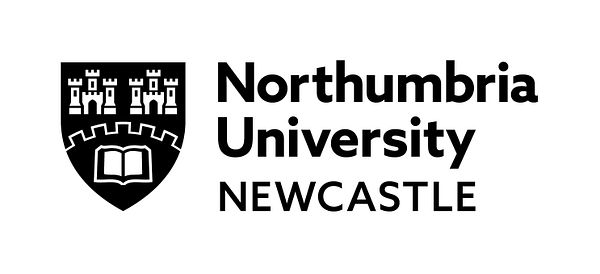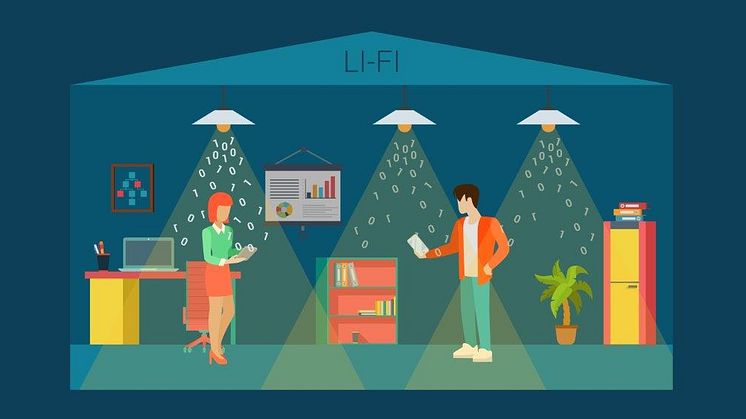
Press release -
Northumbria key partner in European Horizon 2020 Project on Visible Light Communications

Northumbria University, Newcastle has been chosen to take part in a multi-million pound research project exploring how light could be used to allow electronic devices to communicate in the smart homes, cars, factories and businesses of the future.
Northumbria is the only UK institution involved in the €3.75m (£3.44m) Visible Light Communications based Interoperability and Networking (VisIoN) project, which is being funded by the European Commission.
Over the last 12 years, Northumbria has developed significant expertise in the field of Visible Light Communications through the work of its Optical Communications Research Group, led by Professor Zabih (Fary) Ghassemlooy.
As a key partner in the VisIoN project, Northumbria will help to train a new generation of early-stage researchers in the emerging area of Visible Light Communication, as well as contributing to better scientific understanding and technical knowledge within the field.
This will include exploring how the technology can be used in smart transportation, and medical and manufacturing environments, with Northumbria academics supporting PhD students, running tutorials and workshops and writing academic papers.
Professor Ghassemlooy said: “Visible Light Communication (also known as LiFi) is completely transforming the concept of telecommunication. Modern LED lights are extremely energy efficient and long lasting and it is predicted that in the near future LEDs will be the main source of light worldwide. LEDs can also be used for indoor GPS and sensing, thus opening up new frontiers in research in this emerging green technology.
“The benefit of LEDs is that they are semiconductor devices, similar to silicon chips, which means we can switch these bulbs on and off at very high speeds, thus allowing data to be sent from LED lights to devices such as computers, smart phones, traffic signs and a wide variety of other receivers.
“This communication takes place faster than the human eye can process, so we would simply see a constant flow of light, providing us with illumination while also transporting data quickly, safely and securely.
“This is a very exciting area of research that could have high-impact results and Northumbria is very proud to be part of this ground-breaking project.”
The VisIoN project is being coordinated by Dr. Mohammad-Ali Khalighi of the Ecole Centrale Marseille, Fresnel Institute, in France, and is supported by six academic and five industry partners from seven European countries including Spain, France, Germany and Czech Republic. The project will begin at the start of October and will run for four years. Northumbria has been awarded over £440,000 for its part in the £3.44m project.
Northumbria’s Optical Communications Research Group has been established for 12 years and focuses on theoretical investigation, simulation and practical implementation of devices, and systems for optical wireless communications, visible light communications, free space optical communications, radio over fibre, and high-speed optical switching and routing.
The group is carrying out pioneering work on visible light communications and organic visible light communications (the first in the world) in collaboration with Siemens (Germany), University College London and others. Northumbria’s Agilent-sponsored Photonic Research Laboratory is the first of its kind in the North of England with unique and state-of-the-art test and measurement facilities.
The research group was established by Professor Ghassemlooy – a leading ambassador in the field of Visible Light Communications. He has supervised over 56 PhD students and published around 700 papers including three books on Optical Wireless Communications. In addition to his role at Northumbria, he is also editor-in-chief of the International Journal of Optics and Applications, The Mediterranean Journal Electronics and Communications and currently serves on the editorial committees of a number of international journals. He is also the founder and Chairman of the Institute of Electrical and Electronics Engineers and the Institution of Engineering and Technology sponsored International Symposium on Communication Systems, Network and Digital Signal Processing (CSNDSP).
For more information about Northumbria University’s Optical Communications Research Group, visit http://soe.northumbria.ac.uk/ocr/
Topics
Categories
This project has received funding from the European Union’s Horizon 2020 research and innovation programme under the Marie Skłodowska-Curie grant agreement No 764461. This news article reflects the view of Northumbria University. The European Commission is not responsible for any use that may be made of the information it contains.
Northumbria is a research-rich, business-focused, professional university with a global reputation for academic excellence. To find out more about our courses go to www.northumbria.ac.uk
If you have a media enquiry please contact our Media and Communications team at media.communications@northumbria.ac.uk or call 0191 227 4606.











